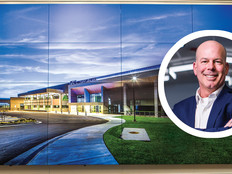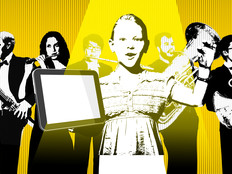IoT Incorporates Human Gestures
An Internet search for virtual reality typically turns up goggle-wearing video game players who swing their hands wildly in the air to fend off aliens.
That may be the popular conception of virtual reality (VR). Yet it’s taking shape far differently, especially with regard to education. Many schools and universities are already tapping into the technology to create environments that students might not be able to experience otherwise. Some leverage VR to take students on a trip around the globe, gain training in science topics and teach specific engineering skills.
The trend may only pick up with recent innovations by Google, where gestures and Internet-connected devices could make the classroom and many industries a more transformative place. While such a future may seem far off, there are already instances where the cutting-edge technology is now in use.
Virtual Classrooms on the Rise
Some areas of the sciences are already integrating such technology into their instruction. Natalie B. Milman, an associate professor of educational technology at The George Washington University, cited the medical field as one area where use of VR and related technologies is expanding.
Elsewhere, a number of high school and college students, in conjunction with the Immersive Education Initiative and the National Park Service, have created a 3D version of Bent’s Old Fort along the Santa Fe Trail in Colorado. The fully immersive VR environment will be made available to other schools and clubs around the world, allowing more teachers and children to experience firsthand interactions with the fort.
Bring on the Future
Not surprisingly, Google is accelerating the march toward a more gesture-fueled Internet of Things. The company has unveiled a few projects this year that incorporate not only virtual reality, but also augmented reality — a view of the real world supplemented by computer-generated sounds, video and graphics.
The projected size and growth of the virtual reality industry by 2018
SOURCE: MarketsandMarkets, “Augmented Reality and Virtual Reality Market by Technology Types — Global Forecast and Analysis, 2013–2018,” March 2014
One, Project Soli, is a radar device that’s about the size of an SD card, whose signal changes depending on one’s hand movements or gestures.
Another, Project Tango, enables tablets, robots and other devices to use spatial and dimensional understanding of their environments. For example, one could use a tablet to scan a room and create a 3D map of the space, which could then be used by an architect for space planning.
Otto Benavides, an associate professor of education at California State University, Fresno, runs the NASA Educator Resource Center for central California educators. He sees a future in which students will be able to use these technologies to make the classroom a portal to other environments.
“It could be anything — a geologist working remotely in the Amazon and uploading information via satellite. A scientist or student from any field may be able to interact and see what they’re doing. I see those happening, and I don’t think it’s going to take that long to get there,” he said.
As an example, Benavides cited the rise of 3D printing, which only a few years ago represented a radical concept. Today, the technology enjoys mainstream incorporation in education and curriculum.
Funding remains the unknown, a challenge acknowledged by both Benavides and Milman, who agree the paradigm is only more difficult within education. While there’s great interest from large companies like Google, and growing research in the field, future implications of a more connected educational realm remain to be seen.








